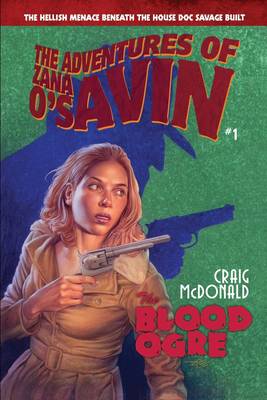
- Afhalen na 1 uur in een winkel met voorraad
- Gratis thuislevering in België vanaf € 30
- Ruim aanbod met 7 miljoen producten
- Afhalen na 1 uur in een winkel met voorraad
- Gratis thuislevering in België vanaf € 30
- Ruim aanbod met 7 miljoen producten
Zoeken
€ 19,95
+ 39 punten
Omschrijving
USA, the Great Depression. Lester Dent and Walter Gibson are the most-prolific, widely published storytellers on earth, authors of Doc Savage and The Shadow magazines-ground-breaking pulp heroes inspiring Superman and Batman, and launching the comic book age. Tasked with writing two Shadow novels each month, Gibson uses a battery of typewriters, resting bloodied fingertips between books as he pounds out 1,680,000 words a year. Attempting a similar impossible schedule, Dent suffers an apparent nervous breakdown-beginning to see and actually interact with his Doc Savage characters, come-to-life. In 1949, Dent pens his oddest and last-published Doc Savage novel, one in which he sends his strapping bronze adventurer into the very heart of Hell. Ten years later, Dent is dead. Jump decades: The nearly forgotten Doc Savage and Shadow pulp novels are enjoying new life in paperback, selling millions of copies. Yet, simultaneously, people report seeing a strange, black-clad figure with coal-fire eyes around an old brownstone on Gay Street in Greenwich Village. The building in question? The very one in which Gibson penned the last of his Shadow novels in 1949. A dabbler in the occult, Gibson insists to interviewers the specter is that of The Shadow, and is a tulpa, or "living mind-projection," spawned by his unrivaled literary output. But another, far more sinister "mind creature" is actively threatening the world, a tulpa hatched by an adolescent Lester Dent and left to lash out from earth's fiery center. In the tradition of Michael Chabon's Amazing Adventures of Kavalier & Clay, and Paul Malmont's The Chinatown Death Cloud Peril, Edgar Award(c)-finalist Craig McDonald offers a haunting mix of history and meta-fiction centered on the very act of literary creation, but served up as 21st Century, pulp-lit adventure in which pulp fiction characters literally come to life.
Specificaties
Betrokkenen
- Auteur(s):
- Illustrator(s):
- Uitgeverij:
Inhoud
- Aantal bladzijden:
- 304
- Taal:
- Engels
- Reeks:
- Reeksnummer:
- nr. 1
Eigenschappen
- Productcode (EAN):
- 9798840156674
- Verschijningsdatum:
- 12/07/2022
- Uitvoering:
- Paperback
- Formaat:
- Trade paperback (VS)
- Afmetingen:
- 152 mm x 229 mm
- Gewicht:
- 449 g

Alleen bij Standaard Boekhandel
+ 39 punten op je klantenkaart van Standaard Boekhandel
Beoordelingen
We publiceren alleen reviews die voldoen aan de voorwaarden voor reviews. Bekijk onze voorwaarden voor reviews.











